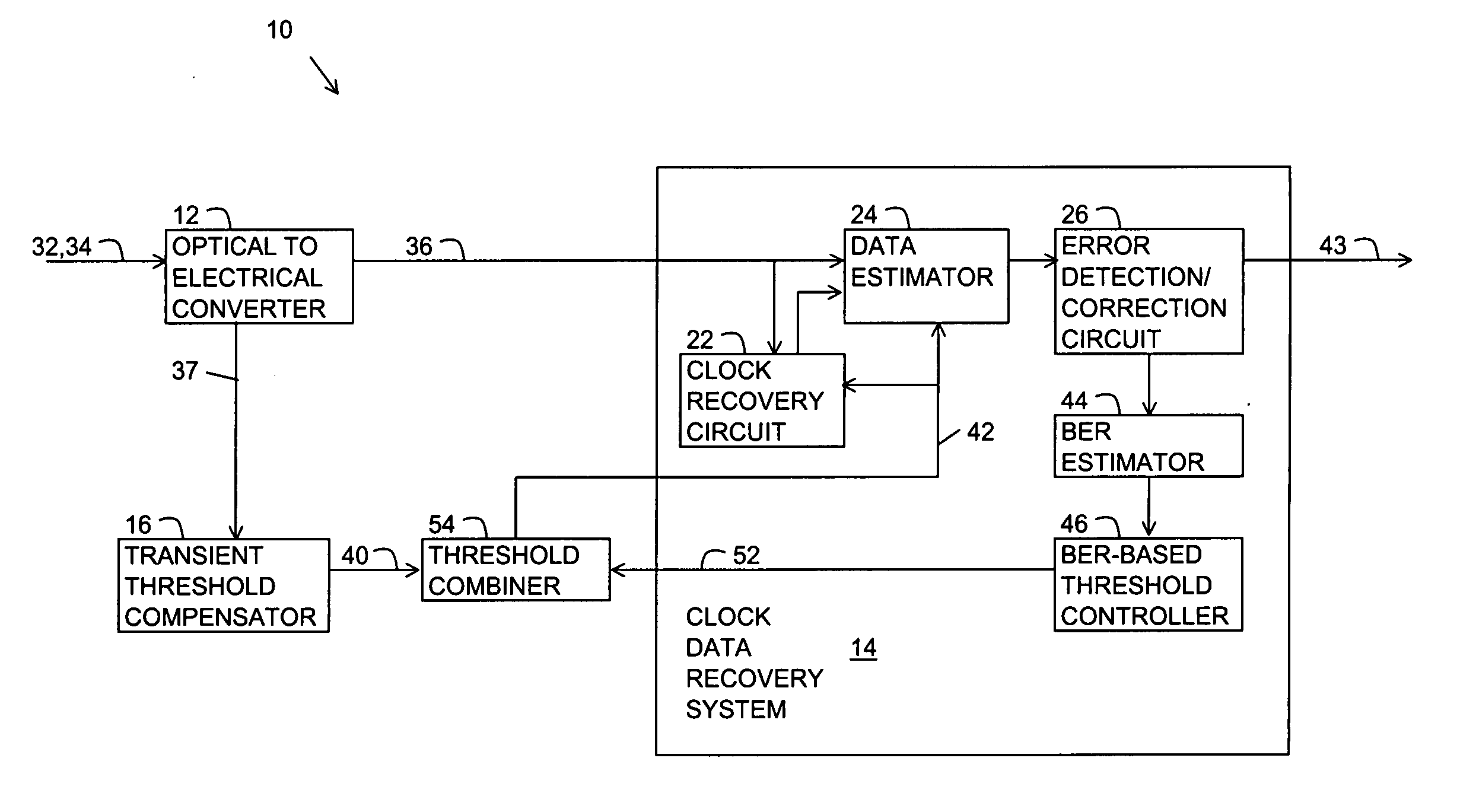Optical receiver having transient compensation
a transient compensation and optical receiver technology, applied in the field of optical receivers, can solve the problems of high installation cost for retrofitting into existing systems, low cost, and inability to detect errors, and achieve the effect of improving the bit error rate (ber) performance and low cos
- Summary
- Abstract
- Description
- Claims
- Application Information
AI Technical Summary
Benefits of technology
Problems solved by technology
Method used
Image
Examples
Embodiment Construction
[0014]FIG. 1 is a block diagram of a receiver of the present invention referred to with a reference number 10. The receiver 10 includes an optical to electrical (OE) converter 12, a clock and data recovery (CDR) system 14 and a transient threshold compensator 16. The CDR system 14 includes a clock recovery circuit 22, a data estimator 24, and an error detection / correction circuit 26. It should be noted that a “circuit” typically includes both hardware and software. The receiver 10 may also include other components such as optical and electrical demultiplexers, amplifiers and filters.
[0015] The OE converter 12 couples to an optical link 32 for receiving an incoming amplitude or intensity modulated optical signal 34 and converting the signal 34 to a modulated electrical signal 36. The modulated electrical signal 36 may be baseband where the modulation is the signal 36, or the modulation may be carried on an intermediate frequency carrier signal. In either case, the pattern and rate o...
PUM
 Login to View More
Login to View More Abstract
Description
Claims
Application Information
 Login to View More
Login to View More - R&D
- Intellectual Property
- Life Sciences
- Materials
- Tech Scout
- Unparalleled Data Quality
- Higher Quality Content
- 60% Fewer Hallucinations
Browse by: Latest US Patents, China's latest patents, Technical Efficacy Thesaurus, Application Domain, Technology Topic, Popular Technical Reports.
© 2025 PatSnap. All rights reserved.Legal|Privacy policy|Modern Slavery Act Transparency Statement|Sitemap|About US| Contact US: help@patsnap.com



